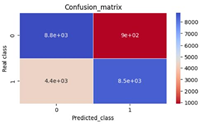Sustainable information into portfolio optimization models
Abstract
In the last fifteen years, extreme events such as the global financial and economic crisis of 2007–2008 and the Covid-19 pandemic have highlighted the importance of corporate social responsibility and sustainability in different aspects of our society. The environmental, social, and governance (ESG) disclosures have also gained increasing significance for investors due to initiatives undertaken by international bodies. In particular, with the Action Plan in 2018, the European Commission has assigned specific responsibilities to financial intermediaries to drive flows toward sustainable investments, explicitly requiring portfolio managers to integrate these non-financial factors into their decision-making processes. More and more, asset management firms and insurance companies offer tailored products to meet their customers’ sustainable needs and desires. This trend implies a growing recognition of sustainable practices in the financial sector, emphasized by the need to integrate ESG considerations in investment strategies.
References
[1]Markowitz H. Portfolio selection. The Journal of Finance 1952; 7(1): 77–91.
[2]Liagkouras K, Metaxiotis K, Tsihrintzis G. Incorporating environmental and social considerations into the portfolio optimization process. Annals of Operations Research 2022; 316: 1493–1518. doi: 10.1007/s10479-020-03554-3.
[3]Kaucic M, Piccotto F, Sbaiz G, Valentinuz G. Optimal portfolio with sustainable attitudes under cumulative prospect theory. Journal of Applied Finance & Banking 2023; 13(4): 65–86. doi: 10.47260/jafb/1344.
[4]De Spiegeleer J, Höcht S, Jakubowski D, et al. ESG: A new dimension in portfolio allocation. Journal of Sustainable Finance & Investment 2023; 13(2): 827–867. doi: 10.1080/20430795.2021.1923336.
[5]Morelli G. Responsible investing and portfolio selection: A shapley - CVaR approach. Annals of Operations Research 2023. doi: 10.1007/s10479-022-05144-x.
[6]Schmidt AB. Optimal ESG portfolios: An example for the Dow Jones index. Journal of Sustainable Finance & Investment 2022; 12(2): 529–535. doi: 10.1080/20430795.2020.1783180.
[7]Garcia-Bernabeu A, Salcedo JV, Hilario A, et al. Computing the mean-variance-sustainability nondominated surface by Ev-MOGA. Complexity 2019; 2019: 6095712. doi: 10.1155/2019/6095712.
[8]Hilario-Caballero A, Garcia-Bernabeu A, Salcedo JV, Vercher M. Tri-criterion model for constructing low-carbon mutual fund portfolios: A preference-based multi-objective genetic algorithm approach. International Journal of Environmental Research and Public Health 2020; 17(17): 6324. doi: 10.3390/ijerph17176324.
[9]Pedersen LH, Fitzgibbons S, Pomorski L. Responsible investing: The ESG-efficient frontier. Journal of Financial Economics 2021; 142(2): 572–597. doi: 10.1016/j.jfineco.2020.11.001.
[10]Xidonas P, Essner E. On ESG portfolio construction: A multi-objective optimization approach. Computational Economics 2022; doi: 10.1007/s10614-022-10327-6.
[11]Cesarone F, Martino ML, Carleo A. Does ESG impact really enhance portfolio profitability? Sustainability 2022; 14(4): 2050. doi: 10.3390/su14042050.
[12]Lindquist WB, Rachev ST, Hu Y, Shirvani A. Advanced REIT portfolio optimization: Innovative tools for risk management. Springer; 2022.
Copyright (c) 2023 Gabriele Sbaiz

This work is licensed under a Creative Commons Attribution-NonCommercial 4.0 International License.











